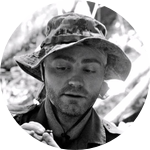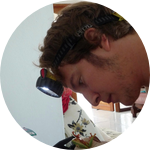About This Project
Species with restricted distributions and occur at higher elevations are most prone to extinction. This project will investigate how climate and habitat change may impact on lizards with restricted distributions in Ecuador. Understanding how populations may change through time will enable us to put measures in place to help conserve species. The project will provide locals with the skills to assess and monitor reptile populations within the Santa Lucia Reserve.
Ask the Scientists
Join The DiscussionWhat is the context of this research?
The project will be conducted in the Santa Lucia Reserve in northwest Ecuador, home to one lizard species (Riama yumborum) that is only found within the Santa Lucia reserve ( and one lizard species ((R. oculata) with a highly restricted distribution. Riama yumborum was discovered by the team leading this project but its biology is still poorly documented. The endangered R. oculata has been found to lay eggs in large communal nests with >300 eggs (unpub. data). Since other Riama species have been found to lay a small number of eggs, this communal nest is likely to represent a major breeding ground for these lizards. These breeding grounds are vitally important for these lizards and changes to habitat and climate will impact on them.
What is the significance of this project?
Both Riama oculata and the newly described R. yumborum have extremely restricted distributions and gathering important data on breeding behaviour and population sizes can aid in the preservation of these species and also other enigmatic vertebrates and invertebrates that inhabit the cloud forests in northwest Ecuador.
Understanding the microhabitats that the communal nests of R. oculata and possibly R. yumborum occur in can help us predict the effect that climate and habitat change will have on the biodiversity of the area.
The project will also train and empower locals from the nearby community in ecological and conservation methods, which is vitally important for the conservation of the areas surrounding the reserve and the species that inhabit it.
What are the goals of the project?
> Gather important and novel information on the ecology, breeding biology, and population dynamics of the lizard species Riama oculata and R. yumborum.
It will enable us to predict how future environmental and climatic change will impact on the lizards. As much data on the natural histories of these species will be gathered. For example, the discovery of prehensile (grasping) tails in R. oculata (by the team) could mean that it is not only restricted to the ground.
> Train and empower locals from the Santa Lucia Reserve to effectively gather data and monitor populations of lizards and other reptiles.
This will not only provide locals with the knowledge and expertise to research and conserve their environment but also as a long term strategy for conservation.
Budget
The budget will allow us to survey the two lizard species within the Santa Lucia Cloud Forest Reserve, Ecuador and empower and train locals in appropriate and effective surveying and monitoring techniques for reptiles and amphibians. The project will also help us to ascertain how the two species and other species may be impacted by environmental and climate change and help to set up conservation action plans.
Endorsed by
Meet the Team
Team Bio
The team includes staff from Reaseheath College, UK and staff from Santa Lucia Cloud Forest Reserve, Ecuador.
Simon Maddock
I have been carrying out reptile and amphibian research within the Santa Lucia Cloud Forest Reserve since 2008 and I have had the privilege of publishing several research papers from work carried out within the reserve (see https://www.researchgate.net/profile/Simon_Maddock/contributions). These scientific reports include a new species discovery (Riama yumborum). I have also found new behaviours and previously unknown natural history information for members of the genus Riama.
I am currently a lecturer at Reaseheath College, UK and a Scientific Associate of the Natural History Museum, London. My main research interests are the ecology, conservation, taxonomy and evolution of reptiles and amphibians.
Lab Notes
Nothing posted yet.
Project Backers
- 5Backers
- 2%Funded
- $85Total Donations
- $17.00Average Donation


